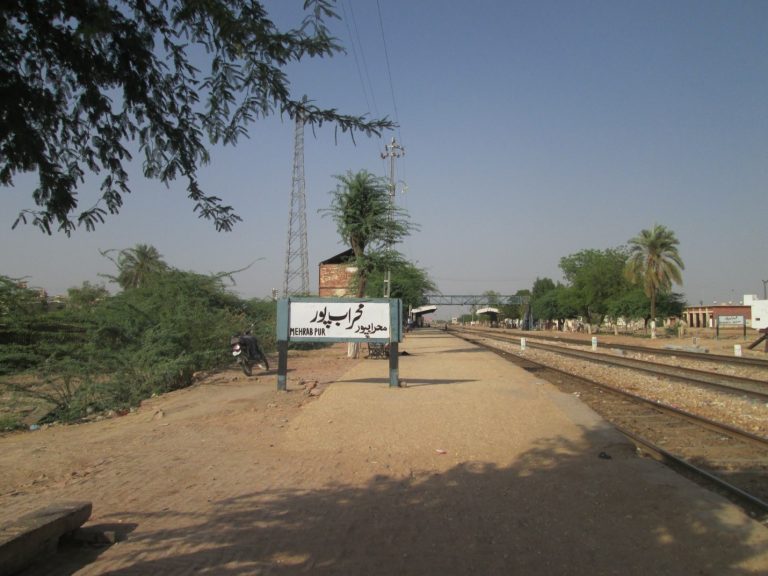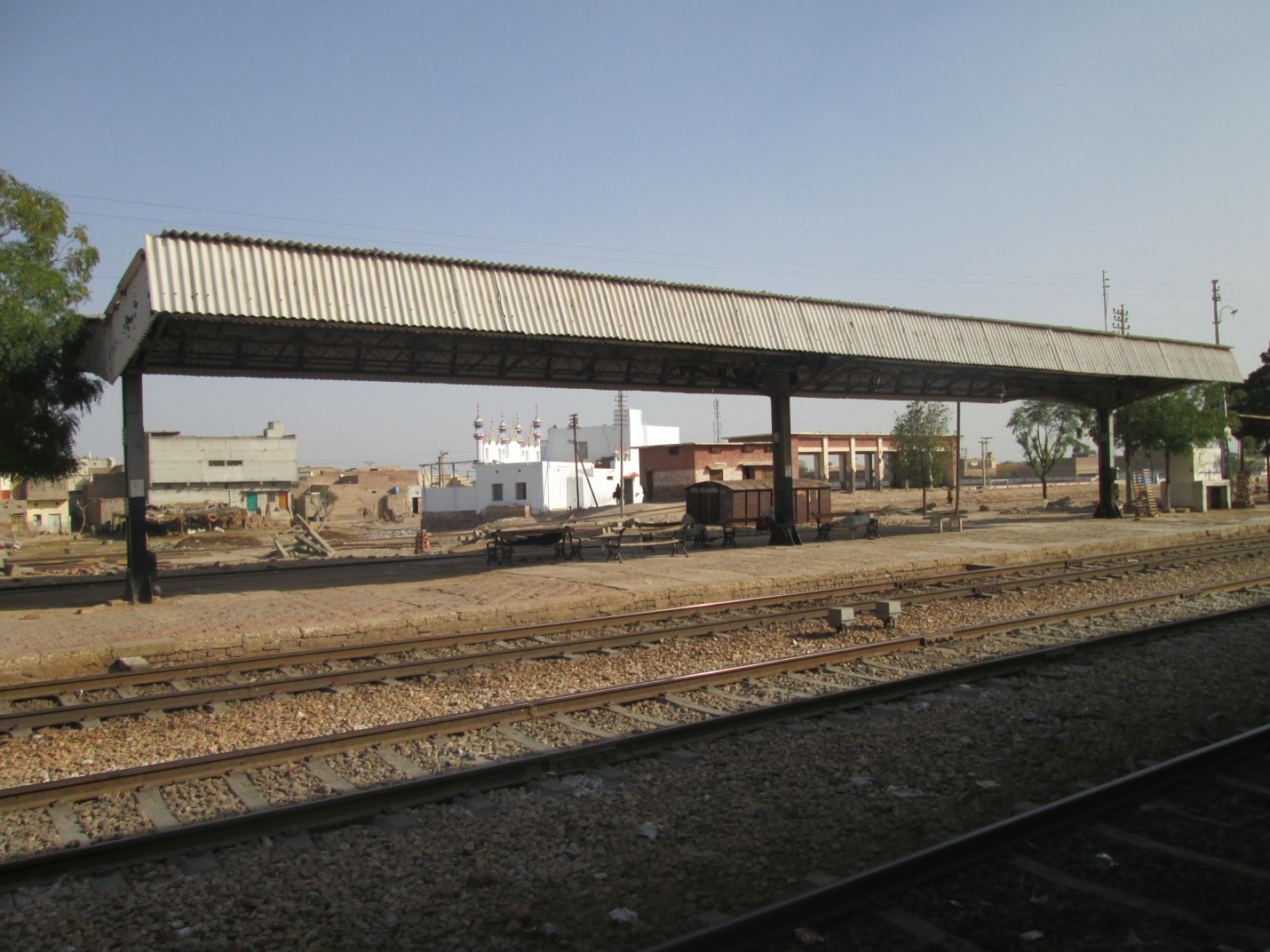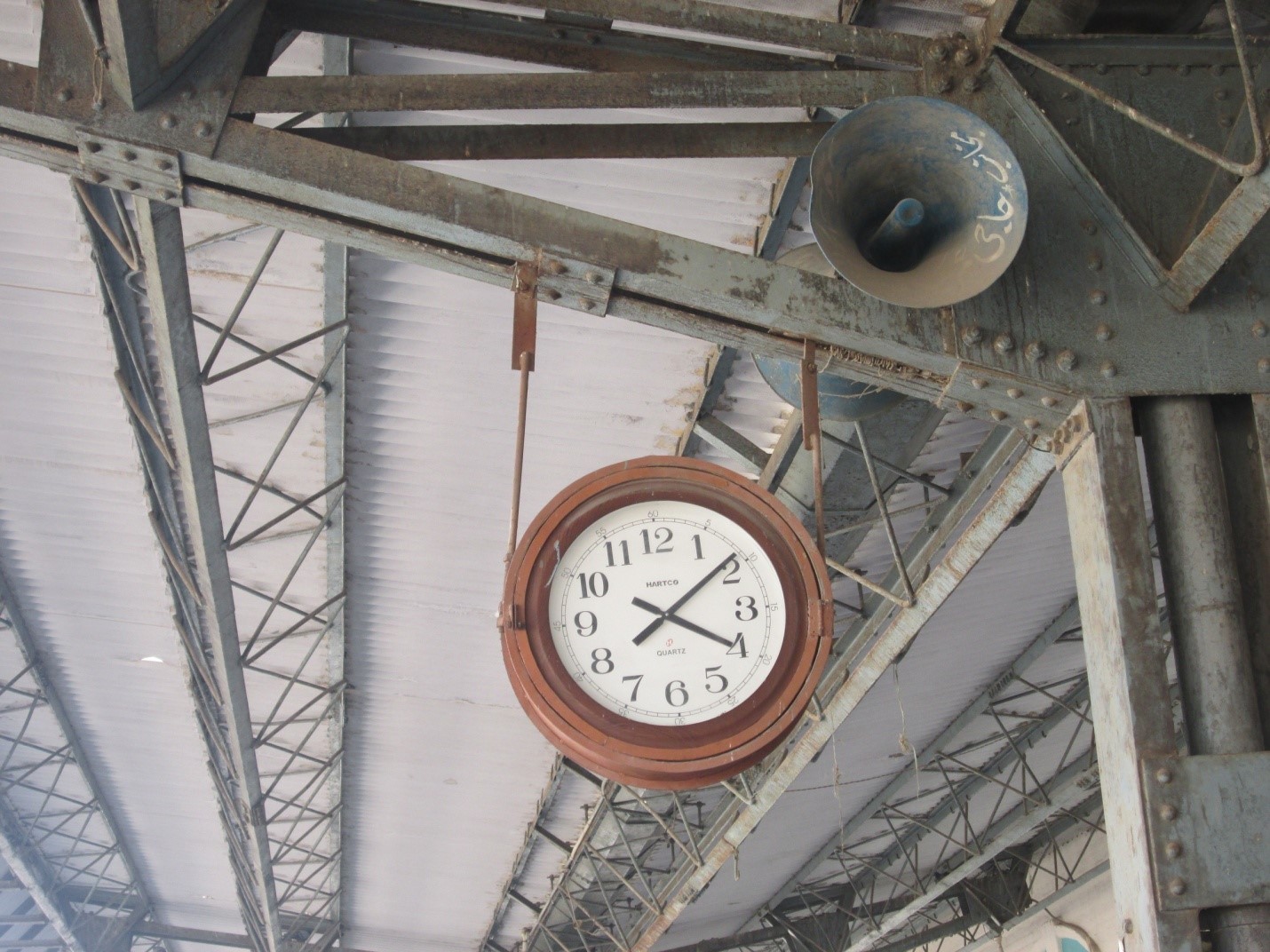
This will not only benefit people in travel but can also improve trade and commercial activities as this city is a trade and commercial center also.
Quratulain Kareem
Railways system is considered most effective mode of public transport around the world being reliable and cost effective, and bulky goods can easily be transported over long distances. Railways have also brought villages closer to the cities. The railways system was introduced to facilitate easy movement of people, police and defense personnel and equipment.
The oldest known, man/animal-hauled railways date back to the 6th century BC in Corinth, Greece while the rail transport commenced in mid-16th century in Germany in the form of horse-powered funiculars and wagon ways. Modern rail transport commenced with the British development of the steam locomotive in Merthyr Tydfil when Richard Trevithick ran a steam locomotive and loaded wagons between Penydarren Ironworks and Abercynon in 1802. Thus the railway system in Great Britain is the oldest in the world.
Rail transport in Pakistan began in 1855 during the British Raj, when several railway companies began laying track and operating here. The country’s rail system was called Pakistan Western Railway before dismemberment in 1971. The system was originally a patchwork of local rail lines operated by small private companies, including the Scinde, Punjab and Delhi Railways and the Indus Steam Flotilla. The Indian railway network was the largest technological project of the 19th century initiated by the British.
The first railway track of 105 miles between Karachi City and Kotri City was opened for public traffic on May 13, 1861. A double line of 21 miles was later built between Karachi City and the Karachi cantonment. The railway network gradually spread in the country and connected the whole country similar to a web. The network soon became the symbol of power and identity of the British.
Railways were the most important infrastructure development in India from 1850s. In terms of the economy, railways played a major role in integrating markets and increasing trade. In terms of politics, railways shaped the finances of the colonial government and the Princely States. At the same time, Indian political institutions influenced railway ownership and policy, which in turn influenced railway performance. As the twentieth century progressed, railways became a force for independence and democracy.
After independence, 5,048 route miles (8,124 km) North Western Railway track became the Pakistan Railway. In 1947, Muhammad Ali Jinnah and the Government of Pakistan invited Frank D’Souza to set up the Pakistani rail system.

Following independence in 1947, the North Western Railway became Pakistan Western Railway and the rail system was reorganized; some of the reorganization was controversial. Rail use increased in early 1948, and the network became profitable. But unfortunately the declining passenger numbers and financial losses in the late 1980s and early 1990s prompted the closure of many branch lines and small stations. The 1990s saw corporate mismanagement and severe cuts in rail subsidies. Due to falling passenger numbers, government subsidies are necessary to keep the railways financially viable.
Among all the important rail lines and major stations and junctions was historically significant and busy junction – Mehrabpur junction railway station.
Mehrabpur Junction railway station is located in Naushehro Feroze district of Sindh province, Pakistan. It is a busy railway station on the main railway line between Karachi and Lahore. It was a junction because it connected a number of towns and villages through branch line between Naushahro Feroze and Tharushah.
On 19 December 2007, at 2:30 am an overcrowded express train traveling from Karachi to Lahore derailed 2 km (1.2 mi) south of Mehrabpur killing over 49 people and injuring two hundreds more. The derailment seems to have been caused by defective rails.
No comprehensive study is available at present to discuss the tangible and intangible qualities to communicate the architectural and historical significance of this junction railway station but many stories and myths are associated with.
It is famous that during the construction of this junction railway station, the builders found a fresh dead body on the proposed track for the construction of railway. The dead body was taken out from the track and buried nearby place. The dead body was considered of a Pir, but why it was found there, which remains a mystery. Later on a tomb was built over the grave and many locals started paying visit and making offerings.
If talking about the historical character of this junction, the locals associate it with the location described in the poem “Twenty Minutes with Mrs. Oakentubb” written by Frank Arthur, which is a powerful drama based on the traditional theme of revenge. It is notable for its skilful manipulation of plot compact with suspense and thrill culminating into a sensational gruesome murder.

The British constructed the railway station in India with multiple characters and from such characters two important characters are observed at Mehrabpur junction and Lahore station. The resemblance of Mehrabpur junction by its appearance with the railway station room is described in poem “Twenty minutes with Mrs. Oakentubb” and other is defense character of the Lahore station. Lahore station is the only station in Pakistan that was constructed not only for the defense of the city but also to provide safe exit for the British in case of any future revolt.
According to local people, this railway station was once the junction from which feeders used to run which are no longer operative, and the people have taken out the train track and government abandoned this historic junction. The closure was justified by the government as the less revenue. Currently there is no facility available here and even the drinking water facility is not available for passengers of mainline. If this junction is once again restored by operating trains on feeder line between Tharushah and Padidan Junctions connecting towns and villages of entire Naushehro Feroze district, this station can be revitalized providing proper facilities to the people. This will benefit people in travel but can also improve trade and commercial activities as this city is not only historically and archaeologically important but a trade and commercial center also. Improvements in railway system can aid to economic development of Mehrabpur as well.
_______________
Quratulain Kareem is Teaching Assistant at Department of Anthropology & Archaeology, University of Sindh.